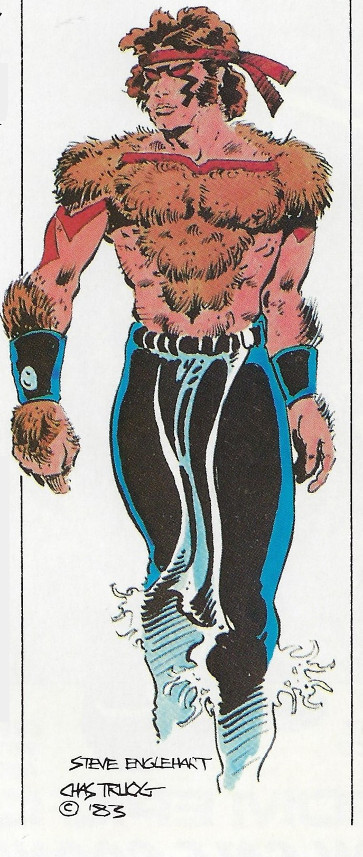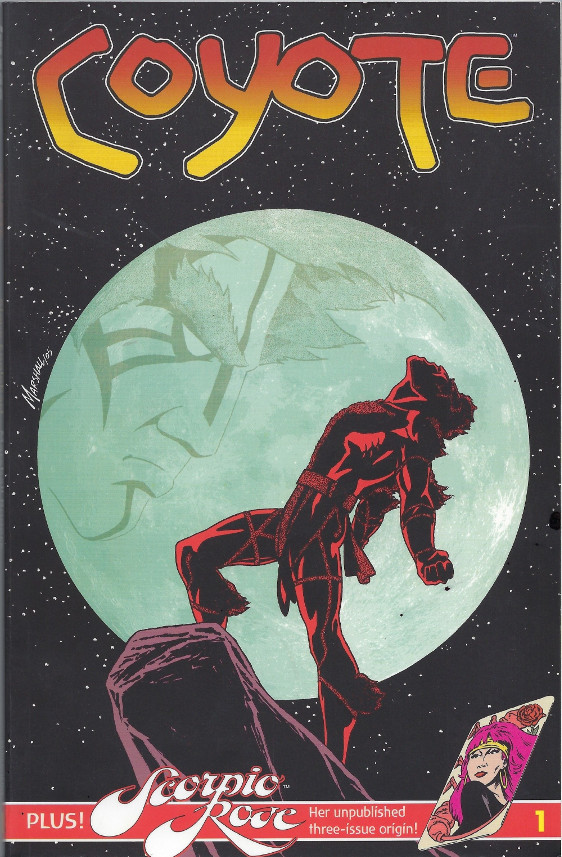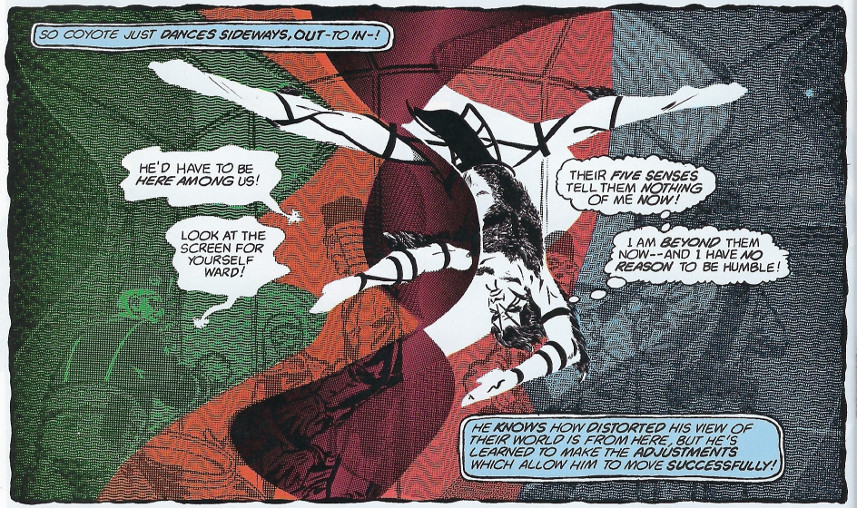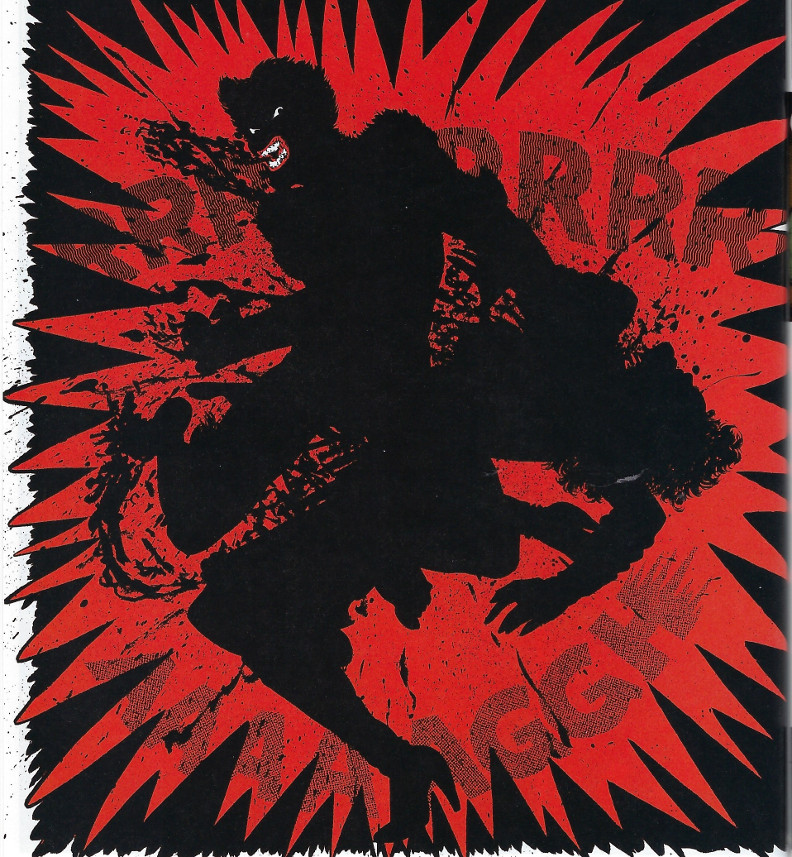This month’s column begins a two-part look at an influential, although short-lived, comic: Steve Englehart’s Coyote.
Steve Englehart is no stranger to this blog. His work developing Mantis in The Avengers in the 1970s, his contributions to The Silver Surfer in the late 80s and early 90s, and the groundwork he laid in support of The Infinity Gauntlet have earned separate columns. And perhaps in the future his celebrated work on Captain America and his surrealistic approach to Doctor Strange will also find a place. Arguably, he was and is one of the best comics writers around. However, no one is perfect and this column and the one that follows examine the rise and fall of ‘One of America’s 8 Best Comics’.
To better understand Coyote, one must first take a look at the cultural milieu to which it belonged. The time was the early 1980s and comics were just beginning to explore sales schemes (such as direct marketing to then emerging comic book specialty stores) that lay outside the usual news stand approach that had dominated the market for over 50 years. The popularity of comics amongst the ‘older’ demographics had led to an audience that knew the creators as well as or better than their creations. The economics had changed and writers and artists were starting to flex their newfound muscles in demanding a variety of new rights.
Several new companies came into this mix, which allowed creators to retain ownership and control over their creations and provided a platform for stories unencumbered by the Comics Code Authority (CCA). The two central companies to this Coyote tale (or is it tail?) were Eclipse Comics, an independent publisher, and Epic Comics, a Marvel imprint started by Jim Shooter.
The story of Coyote begins in Eclipse Magazine, a black-and-white anthology comics magazine published by Eclipse Comics from 1981 to 1983. The original story, featured in issues #2-#8, has been colorized and republished by Image Comics.
The story centers around an infant Amerindian child left by his parents for what they think is a short time while they go over a mountain to watch an above-ground nuclear test. Unfortunately, they never return. The abandoned baby is found and raised by a weather-beaten and nearly feral old man who turns out to be a were-coyote. This self-exile from the modern world, introduces the boy to the fringe desert society to which he belongs; a sort of permanent Burning Man festival inhabited by Vampires, Ghouls, Monsters and the like. Eventually, the man secures the help of a psychic vampire as foster mother and, together, the couple shepherd the boy into his adolescence and his eventual discovery of his own powers.
The reader learns all these details in flashbacks later in the story. The comic actually begins with a murder. Coyote, now fully grown, attacks two men who’ve invaded his corner of the desert. While Coyote slays one of them with no remorse, the other jumps on his motorcycle and flees. Coyote grabs the dead man’s motorcycle to give chase but soon finds he can’t get the handle of this modern machine and crashes – this failure to handle machines will become something of a running theme. The man, one Kline by name, arrives in the nearby city of Las Vegas where it is revealed that he in an operative in the Shadow Cabinet, a clandestine organization seeking to subvert the North American governments. Hating the organization for the offenses of its agent, Coyote decides to take the Shadow Cabinet down for reasons of pride and pleasure.
And there you have it, the basic motif for all of the subsequent Coyote comics: a magical and psychically-enhanced were-creature of the desert, who is a proud, sly, cocky, and loveable incarnation of the trickster god Coyotl, pitted against a cold, merciless, empty, and loathsome embodiment of civilization. A perfect formula for what I call Desert Noir.
To give the flavor of Desert Noir, consider the overall plot of the original Coyote Eclipse run. Coyote eventually picks up Kline’s trail and infiltrates the Shadow Cabinet by using his Shadow Dance capabilities.
Delighted in his ability to move sideways around their security, our anti-hero never pauses to ask why he should, he is simply enjoying bringing mayhem to this group that injured his pride. His mayhem comes to a stop only when he catches sight of the voluptuous form of Phyllida West, the deputy leader of the group. Deciding to learn more about her, Coyote shadow dances a disguise for himself that soon lands him in her bed, her shower, and her life. This flirtatious interaction soon takes a more dangerous turn when he invisibly follows her to a meeting with her superior in the Shadow Cabinet, the deadly Void, who like Coyote, knows about the worlds adjacent to our own.
Barely able to survive, he finds himself on the run with Phyllida West, who has been cast by the Void from the Shadow Cabinet for her incompetence exposing him. The couple hole up in a cottage in the mountains for a week to let the heat die down. Not trusting her motives, Coyote takes the opportunity to absent himself during each day and returns in shadow form to monitor her actions.
After a week of sex and suspicions allayed, he decides to trust this beautiful and dangerous partner and together they thwart the Void’s plan to kill all of America’s favorite movie stars with plutonium-laced Oscars and end his miserable existence. But no happy ending awaits. Phyllida, now in perfect position to fill the void left by the Void’s death, asserts her leadership of the Shadow Cabinet. Having used Coyote to dispose of the only roadblock between her and power, Phyllida decides to end both her partnership with Coyote and his furry life. Never one to allow sentiment to get in the way of sex or murder, Coyote does what any jilted lover would do, he rips her throat out
and returns to his desert ways.
The entire plot is a beautiful execution of the general formulae of such film noir classics as The Maltese Falcon with wonder dashes of magic and sex and horror and humor and, above all else, a desert sensibility mixed in. It is a wonderful read through and through. Its creation and execution were only possible in a creator-owner, CCA-free venue like Eclipse. And its blend of magic and science and wilderness and civilization were only possible in that brackish time of the 1980s where the drug-induced weirdness of the 60s and 70s mixed wildly with the burgeoning tech-driven weirdness of the 90s and beyond.
Next month examines how, coming off of the success of the Eclipse run, Coyote finds a vibrant new life in Epic Comics, where, for a while, it was one of the most talked about and coolest comics around, before crashing into cancellation a mere 3 years later.






